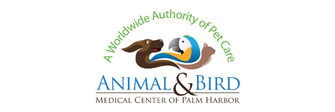Avian Surgery: Surgical Sexing and Laparoscopic Procedures

Because birds have air sacs, they are uniquely designed by nature for laparoscopic surgery. Surgical sexing is a common surgical procedure performed. We recommend 2 hours of fasting the bird for a period of time to prevent regurgitation during anesthesia.
To Begin:
A physical exam would be performed on each bird prior to the procedure. Once a bird was anesthetized, an area on the left side near the hip and thighbone (femur) would be prepped for sterile surgery.
The feathers are plucked, the area scrubbed with surgical soap, a sterile drape is placed over the site and a small incision was then made through the skin. A sterile tube would then be slipped into the hole. This hollow sleeve then provided access to the body cavity of a bird.
A bright, cool light source is connected to a rigid fiber-optics endoscope (usually designed for human joint surgery), and this sterile telescope would then fit into the hollow sleeve already in place.
While the avian surgeon examines the gonad (ovary or testicle), it was possible to evaluate the bird for potential problems, such as an enlarged liver or spleen, cloudy air sacs, abscesses, or scar tissue. It was possible to swab a lesion for bacterial or fungal culture, and for the very brave surgeon, an organ (liver, kidney, or spleen) might be biopsied for microscopic evaluation and testing.
This same procedure is used for diagnosing disease in the abdomen. While using our special rigid fiber optic cameras we can examine and do biopsies of internal organs like the kidneys, liver, pancreas, air sacs, and lungs.
Once the ovary or testicle was identified, the surgeon applies a tattoo using sterile ink injected into the wing web of the appropriate wing to permanently identify the sex of the bird. Since females (of parrot species) usually only possess an ovary on the left side, the left-wing web was tattooed to identify hens. Since males have testicles, left and right, they were tattooed under the right wing. (As an aid to help us remember, we were told that “males are always right” so tattoo the male under the right wing!).
